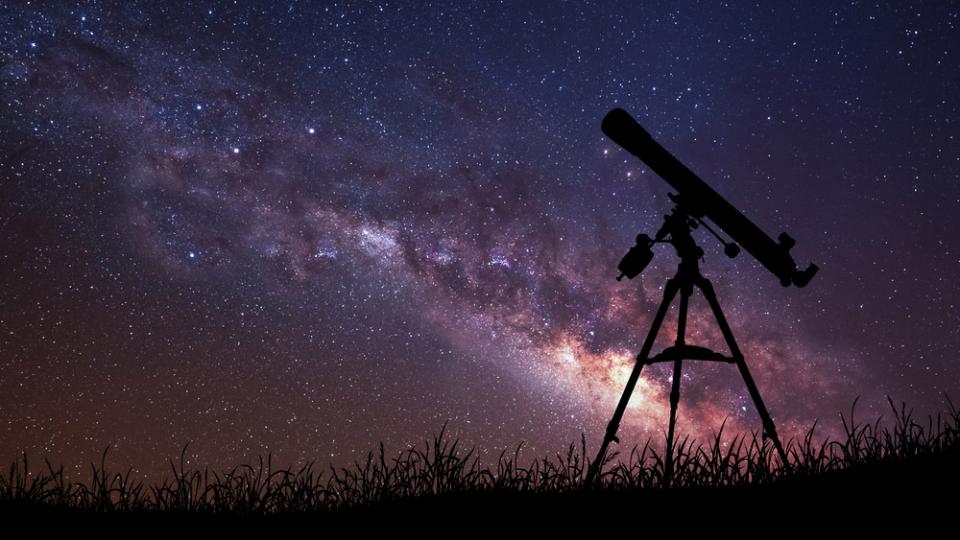Used by amateurs and professionals, the best telescopes under $200 / $500 represent a unique learning opportunity. They lay the basis for further telescope knowledge. Used by kids, astronomy students as well as by adults, these telescopes are capable of offering some of the best images with planets such as Venus or Jupiter or even with other galaxies.
Contents
Features to Consider in Good Telescopes
Making the right choice is always based on the right information in the telescopes world. Most users have the freedom of choosing their products within the budget which can cover a wide spectrum of features. For example, magnification can be considerably different from one case to another.
Aperture
Aperture refers to the ability of the optics to gather light as well as to their ability to produce sharp images. In short, the bigger the aperture the better the telescope is. Those who want to deal with demanding low light conditions need to choose their telescopes based on the good aperture.
Magnification
Magnification is important, but it might not be as high on the list of priorities as aperture. Reduced magnification power is generally preferred for translucent objects which can be galaxies. Maximum magnification can be better for bright objects, such as the Moon or other planets.
Types of Telescopes
Refractors, reflectors, and catadioptrics are the main types of telescopes. Most of them have a length at least 8 times longer than their aperture and they all have their unique advantages.
Refractors
A large lens in front of the main eyepiece in the back characterizes these telescopes. The main lens forms the image in the back. Their result is sharp images with impressive contrast and this is why they can be used for commercial purposes.
Reflectors
Also called the Newtonian reflector, these telescopes use a mirror to gather light. With these designs, the primary mirror sits at the end of the telescope. The light then travels to the top mirror which then deflects it to the eyepiece.
Catadioptric
These types of telescopes combine the lens of the refractor telescopes with the mirrors of the reflector telescopes. In a way, they combine the best principles from both worlds. One considerable advantage of these telescopes is their compact size.
Best Cheap Telescopes 2025 (Under $200)
Those on a budget can find impressive telescopes which get their foot in the astronomy door. The following telescopes are made to deliver good quality images, even if they need small tweaks to see the best results.
1. Celestron – PowerSeeker 127EQ Telescope

With simple collimation, this telescope can rise above its expectations and observe the moon, Saturn or Jupiter.
Editor’s Rating:
Design features
Celestron’s telescope is one of the most popular designs in its cheap range. It offers sufficient features to see interesting details such as the two stripes on Jupiter. Even beyond Orion’s nebula, it can offer decent clarity, especially considering its low price range.
Starting with its design out of the box, the telescope needs a bit of help finding balance, as it won’t sit steadily on the tripod. This can easily be done with balanced counterweights. Given its size, it’s only normal to try and find the best balance on the tripod. For this purpose, the manual GE (German Equatorial) mount proves to be the best choice. With large slow-motion control knobs, users can find the right balance and even smoothly follow the objects on the nighttime sky.
The 127 EQ has the largest aperture (127mm) from the PowerSeeker line. But it is also portable, even if not to the extent of its 60 EQ smaller brother. This being said, users can simply carry it to any location which favors nighttime observation.
Convenient features
The telescope comes with 2 eyepieces of 20mm and 4mm. Both are removable and they can be upgraded in the future. The 3X Barlow lens triples the power of these eyepieces. In theory and practice, this means that users have a wider range of magnification to see a wide range of objects in the sky. From 150X magnification to 450X magnification, the telescope manages to offer a deeper versatility than many would expect from such an affordable design.
The fully coated glass of the cheap telescope recommends it for various needs as a result. It can work for terrestrial observation as it can also work for astronomical use. With reliable brightness and clarity, the telescope can be one of the options beginners consider for their newly-found hobby. This can be one of the reasons the manufacturer sends the telescope pre-assembled as it is ready to use out of the box.
Verdict
After short collimation, the telescope can be a tool to use for years to come on various objects based on its long focal range.
- Needs no tools for assembly
- Includes 3 eyepieces
- Large magnification range
- Supports collimation and weight balancing
- Not stable on the tripod out of the box
2. Celestron – 70mm Travel Scope
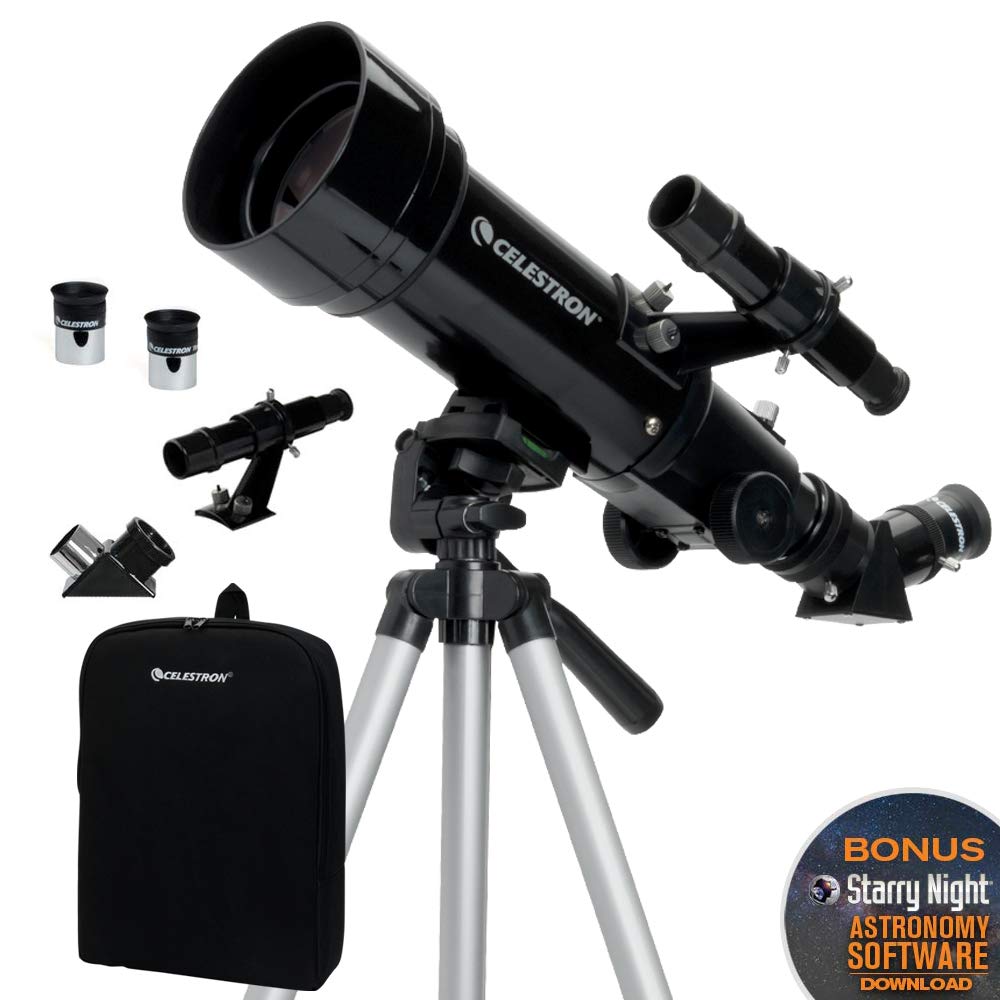
Made to be portable, the telescope sustains terrestrial use and moon observation.
Editor’s Rating:
Design features
The relatively compact design of the telescope is what gives sit such a desirable profile. Celestron offers the 70mm telescope at a highly affordable rate and those seeking portability have it high on the desirables list. Made to fit a backpack, this telescope travels with the user.
On occasion, users can’t rely on a telescope when living in busy cities. But taking the telescope out in open space without pollution is what makes the difference. The 70mm Travel Scope is worth the purchase in this case. It mounts in minutes and unlike other larger telescopes, it suits the busy traveler.
At 4.2 lbs, the telescope is the heaviest of the Travel Scope family at Celestron. But it is still considerably lighter than many others given its compact optics. With higher 40X magnification, it is also the one which goes furthest from its family.
Convenient features
At f5.7, the telescope gathers the most light out of all the Travel Scope releases. It is why many users see the moon and even further. Looking at Jupiter’s natural satellites or Venus is possible with this compact design. Even if it also supports terrestrial use, the telescope may still be able to zoom in on most planets of the solar system.
With 10mm and 20mm eyepieces, the telescope has plenty of versatility. It reaches a total focal length of 400mm which means it will be capable to look for details in the planets, even if not necessarily the sharpest in its class.
Verdict
This compact design is perfect for beginners and kids, offering hard to match portability.
- Includes 2 eyepieces
- Can be used for terrestrial observation
- Includes a soft carry bag
- Gives access to astronomy software
- Poor tripod stability
3. ToyerBee Telescope 76mm
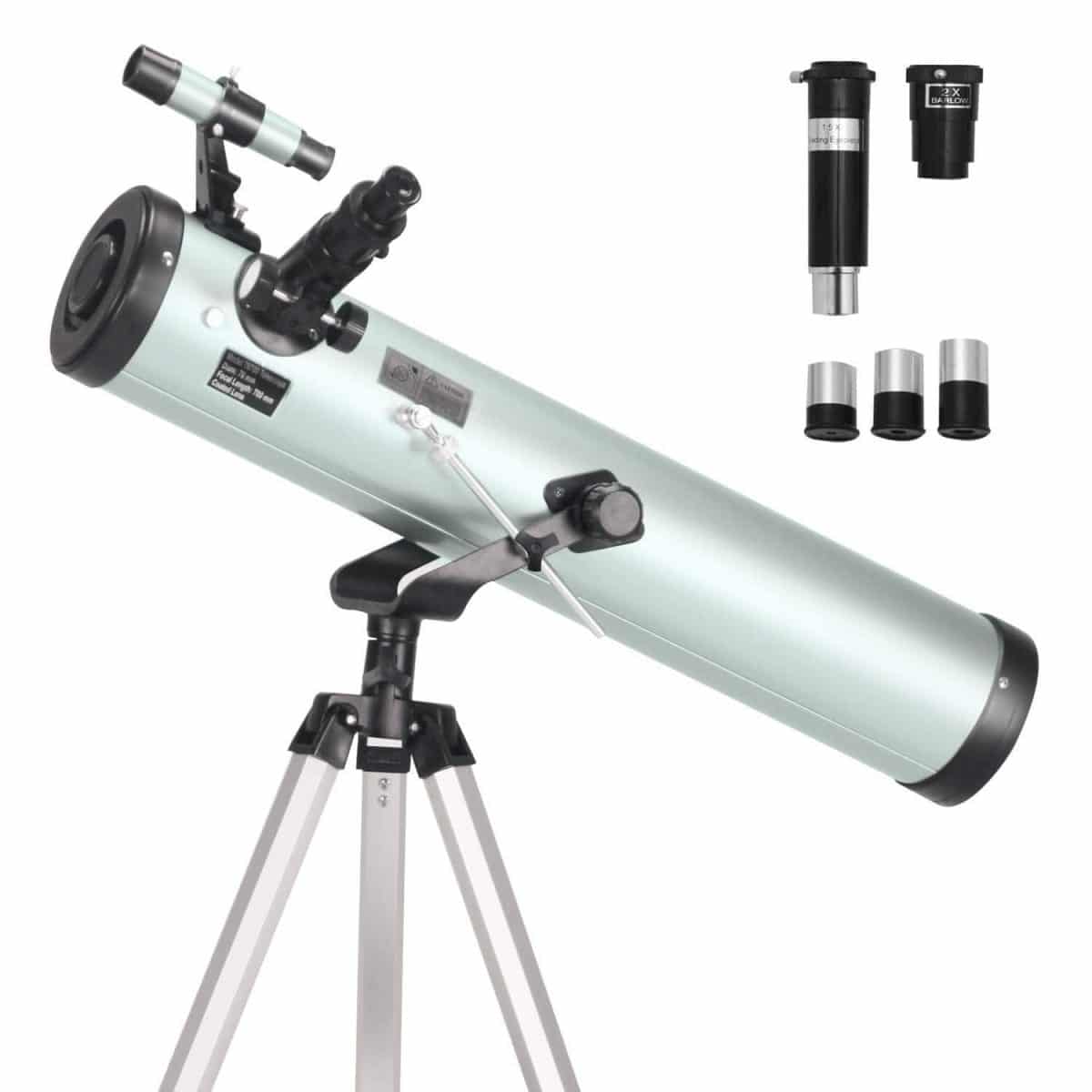
The refractor telescope is one of the highly-rated options in the affordable class.
Editor’s Rating:
Design features
Made both for kids and adults, this telescope stands out with its simple use. Arriving in a box, it only takes up to half an hour to fully assemble it, following the manufacturer’s instructions. There’s plenty of room for adjustability as the telescope allows users to take full advantage of its 3 eyepieces. At 12.5mm, 10mm, and 20mm, the telescope stands out with its adjustability.
With a focal length of 700mm, the telescope can be used by kids, students, and adults. With 2 Barlow lens pieces, it offers plenty of magnification freedom and adjustability for any type of astronomy use.
Convenient features
The telescope is among the leading options for out of the box performance. It even sits well on the tripod, which is a major advantage compared to many other alternatives. The vertical fine adjustment rod allows the telescope to be installed in various positions.
With the help of 3 eyepieces and 2 Barlow lenses, the telescope is known for its versatility. However, it does has two small drawbacks. There’s no movement knob to adjust the telescope, which means users have to grab it and risk accidents. Secondly, the focus adjustment screw needs to be fine-tuned for a smoother experience.
Verdict
Offering straightforward installation, the telescope is great for beginners and hobbyists not looking to invest in additional accessories such as Barlow lenses.
- Includes 3 versatile eyepieces
- Made with 2 Barlow lenses
- Includes fast installation instructions
- Sits well on the tripod
- Focus adjustment system needs to be smoother
4. Orion 10015 StarBlast 4.5 Astro Reflector Telescope
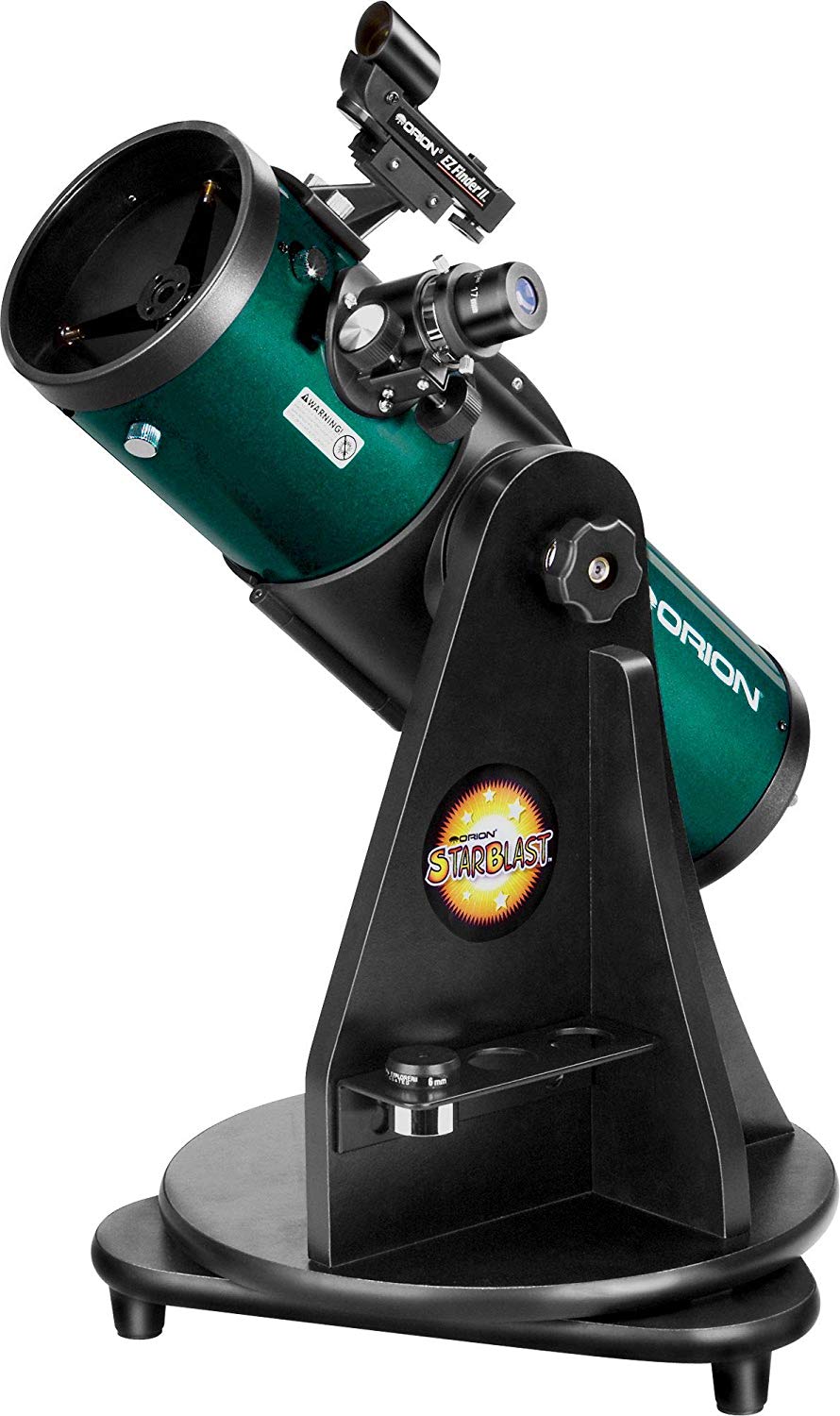
As the little brother of the XT8, this reflector telescope is one of the first to offer f4 aperture at an affordable price.
Editor’s Rating:
Design features
The ability to efficiently gather light has been a serious object for many lens manufacturers. In the telescope world, this ability has seen considerable improvements. However, it’s rarely the case to see a good f4 aperture telescope at an affordable price. Orion managed to create such as telescope with the 4.5 Astro Reflector.
As a result, the manufacturer offers it with no extras to keep the price further down or with a Barlow lens for those willing to spend a bit more. A moon filter is also added to a special deal. It can help new users see better details on the surface of the moon.
Made with Explorer II and Kellner telescope eyepieces, the reflector is ready for use out of the box or after collimation. The Starry Night software can help adjust it for the best performance. Beginners also need to know that even if the telescope gathers more light than others, it still needs to be used in an area with low pollution for the best visibility.
Convenient features
The convenience of this high capacity telescope is that it offers good magnification based on the proper aperture. This is why users can go beyond the Moon. They can see Jupiter’s orbiters as well as star clusters in detail.
Some photographs can be taken with this telescope as well. While they won’t win any photography prizes, they are sufficient for the average user. This is why the telescope’s balance performance works well for most users, especially when long exposure photography is not a priority. The 2 Barlow lenses can be used in tandem, one for finding planets and the other to take closer looks and the occasional smartphone photography.
Verdict
Easy to use out of the box, the telescope is an option for low aperture at an affordable rate.
- Sold with or without Barlow lenses
- Based on f4 aperture
- Ships pre-assembled
- Made with borosilicate glass
- Needs better additional lenses
5. Celestron PowerSeeker 50 AZ Refractor Telescope
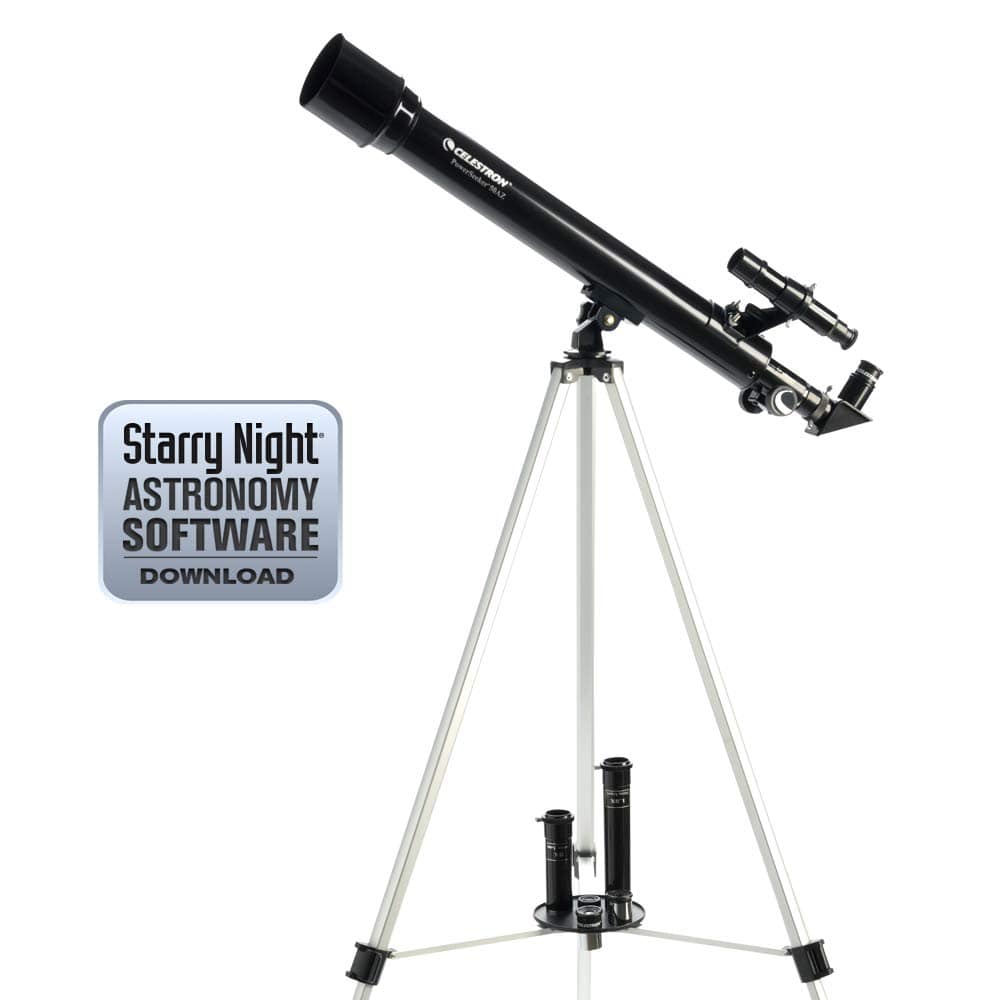
Made for beginners, this telescope features a full-height tripod and included accessories.
Editor’s Rating:
Design features
As one of the simplest beginners’ telescopes to rely on, the telescope is a great gift idea for many users. With 50mm aperture and 600mm focal length, the telescope is suitable for terrestrial and astronomy use. It is a good gift idea or an inspired affordable choice for beginners.
At 5 lbs, it is the heaviest PowerSeekeer. But users can still easily carry it around or take it out into nature for the best visibility. Its 118X magnification makes the telescope reliable in a range of situations, which include observing the furthest planets.
Convenient features
The convenience of this telescope lies in its size. Unlike many others of its class, it is lightweight and for this price, users would struggle to find a better alternative. This being said, its low weight is also a weakness, especially when locking in on planets. Since it is so easy to move, it often loses its orientation quickly and users need to look for planets and starts from scratch again.
Other possible drawbacks come with the succinct instructions. While they’re sufficient for those who’ve used a telescope before, beginners find that instructions leave many things up to the imagination. Apart from these two drawbacks, the telescope offers value for what can be considered as the cheapest option to get into an inspiring hobby.
Verdict
Made with low weight, this telescope lays the foundations of good optics for astronomy beginners and kids.
- Supports 600mm focal length
- Magnification up to 150X
- Based on real refractor principles
- Included software for collimation
- Very succinct instructions manual
Best Cheap Telescopes 2025 (Under $500)
Spending a bit more on a cheap telescope comes with better lenses. As a result of the improved optics choices, the clarity and the details are considerably improved. Here are the top telescopes which offer an improvement over the entry-level designs.
1. Gskyer Telescope, 600x90mm AZ Astronomical Refractor Telescope
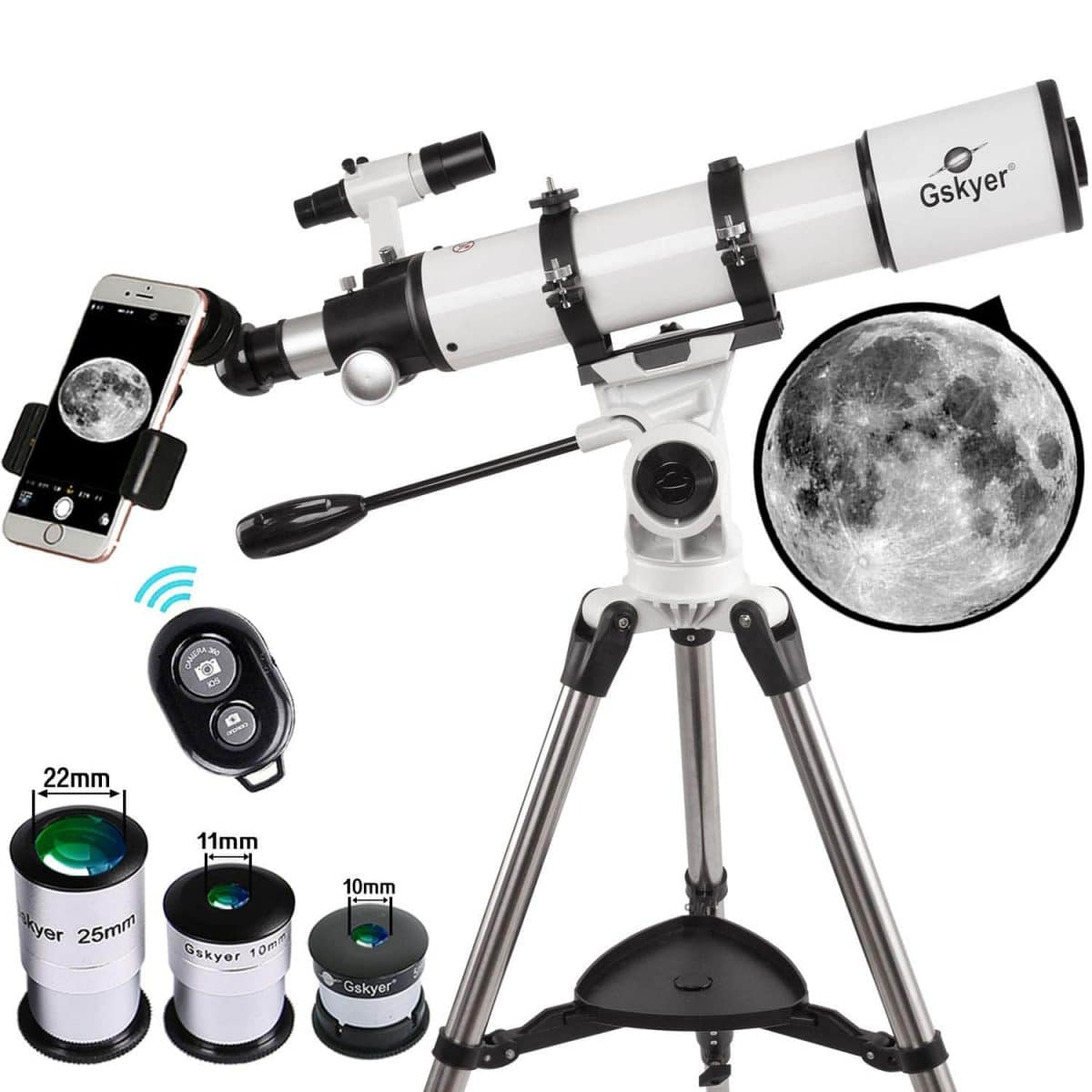
Supporting different viewing positions, the telescope comes with a sturdy tripod, suitable for long-distance observation.
Editor’s Rating:
Design features
The design of the telescope is an improvement over many entry-level alternatives. Made with an aluminum optical tube, it is one of the best for durability. Even the tube ring is considered sturdier by many users. An optical coating is also applied with success on the glass as it offers detailed images with most observations.
Even the tripod is seen as considerably sturdier than its alternatives. Its steel construction recommends it for better stability. Even compared to aluminum Gskyer alternatives, the telescope has some of the best results in terms of stability. From 31 inches to 49 inches, the tripod remains stable and reliable even in windy conditions.
Convenient features
3 Barlow lenses and 3 eyepieces are included in the pack. Rare eyepieces such as the 11mm make this telescope an interesting choice for beginners. Of course, more popular 10mm and 20mm alternatives feel familiar to many users.
With an included smartphone adapter and wireless remote control, the telescope offers one of the best solutions for those seeking to immortalize their favorite observations. As with the rest of the telescope, no tools are needed to install the adapter or the smartphone.
Verdict
With a high number of accessories, sturdy steel, and aluminum construction, the telescope feels professional and it is made for enthusiasts.
- Includes 10mm, 11mm and 20mm eyepieces
- Comes with 3 Barlow lenses
- Made with an aluminum alloy tube
- Included heavy steel tripod
- Uncomfortable to use when tilted up
2. Celestron NexStar 130SLT Computerized Telescope
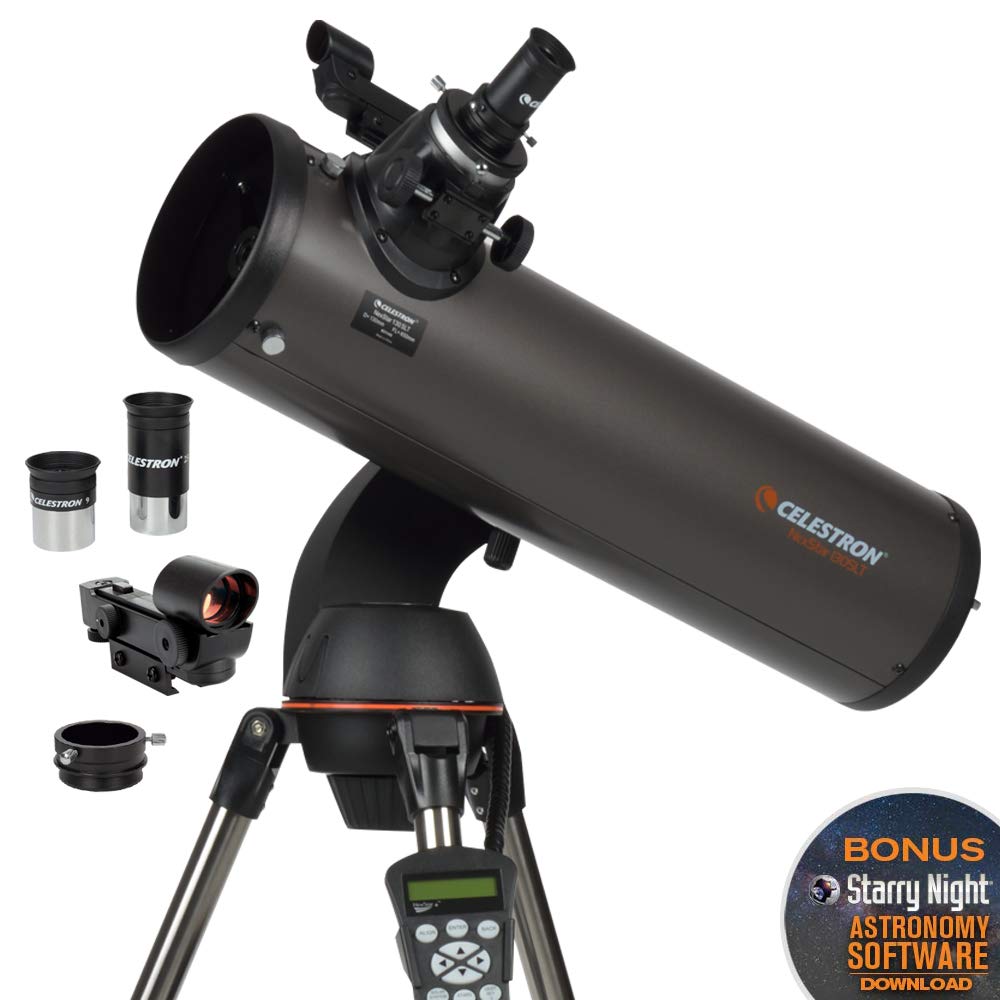
The computerized telescope offers users the ability to slew automatically to over 4.000 objects.
Editor’s Rating:
Design features
Those new to astronomy or those who want to use a telescope for learning purpose can consider this computerized design. Its main advantage is that it manages to slew directly to any of its 4.000 objects. This includes 600 galaxies and over 300-star clusters.
Being a computerized design, it needs batteries to perform. However, users should always ensure they’re doing their best to stock on extra batteries, as the 8 AA batteries run out fast. But the good news is that the Star Locating Telescope is still easy to carry. Users need to take it to the best locations to ensure they get the best-unobstructed views.
Convenient features
Being the largest of the NexStar series, the reflector is recommended for its light-gathering abilities. At f5, it works well with all types of stars, planets, and galaxies and the coating of the lens improves the contrast on most objects very well.
One of the possible drawbacks, especially when used by kids, is the actual weight of the telescope. At 18lbs, maneuvering it is not too easy. However, its advantage is that it sits on a steel tripod way better than most alternatives.
Verdict
This release is mainly recommended for learning purposes with its thousands of stored object locations.
- Includes over 4.000 objects
- Constant f5 aperture
- Focal length up to 650mm
- Newtonian reflector design
- One of the high weight Celestron designs
3. Orion SpaceProbe 130ST Equatorial Reflector Telescope
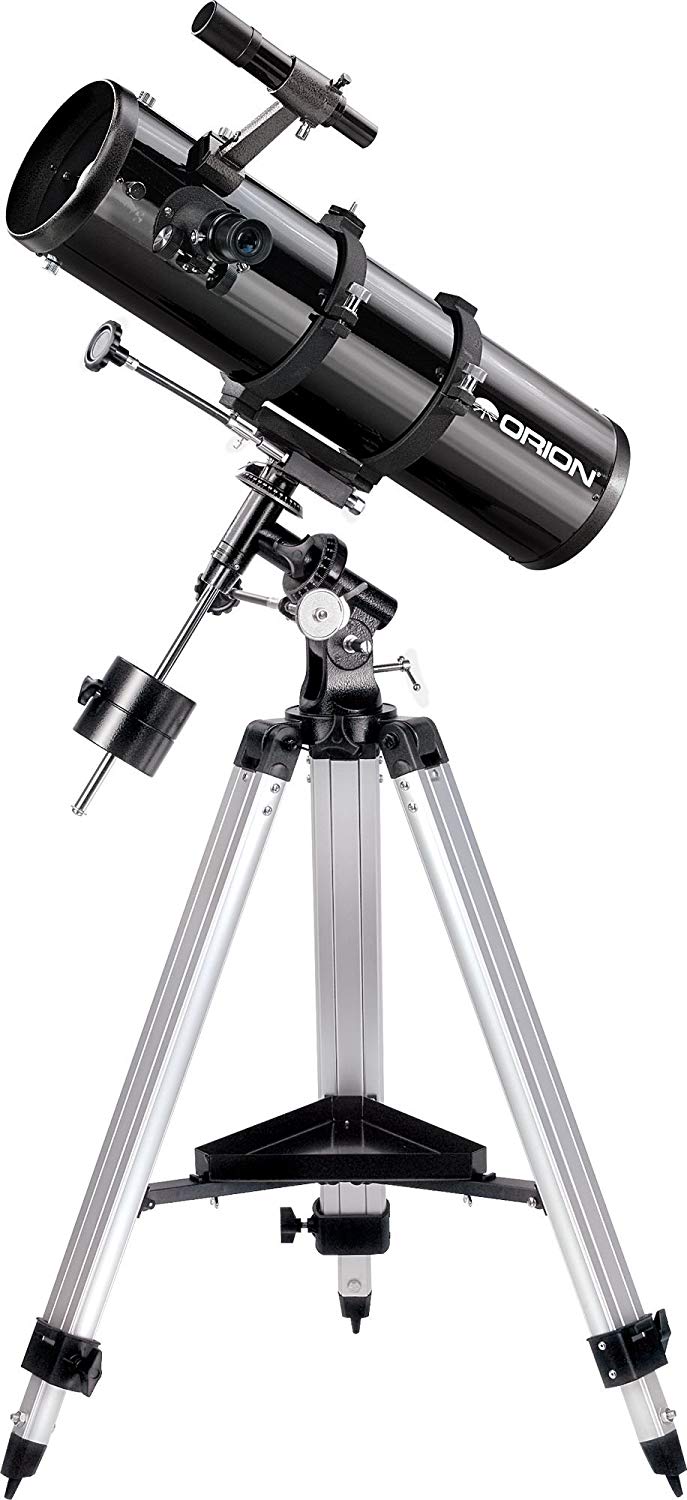
This qualitative telescope fits the budget and represents a suitable design for clear images of the planets.
Editor’s Rating:
Design features
Available as a telescope only or as a kit with eyepieces, a moon filter, and other accessories, it is an option to consider for all types of users. Its price recommends it for beginners but its performance can see it as a suitable option for all types of users.
Inside the pack, users find 1.25in Sirius Plossl eyepiece of 20mm and one of 10mm. A 6X30 finder scope is included as well. All of these accessories may need collimation. But one of the most interesting design characteristics is given by the manual slow-motion tracking, perfect for various celestial objects.
Convenient features
At f5, this telescope is among the options to consider to view the moon, nebulas and star clusters. As a learning tool for kids, it can even be a bit too much. However, it’s reassuring to know it’s aluminum tripod is height adjustable to suit the entire family.
At 650mm, the telescope has the highest useful magnification of 260x. But the most convenient feature of the EQ design is that it only requires users to move it in one direction to counter the Earth’s movement when tracking an object. This can be one of the characteristics highly appreciated with long exposure astrophotography.
Verdict
Suitable for all users, this telescope can be used by beginners or by astrophotographers.
- Available with multiple accessories
- EQ movement for astrophotography
- 260X useful magnification
- Made with an aluminum tripod
- Requires disassembly for transportation
4. Orion 8945 SkyQuest XT8 Classic Dobsonian Telescope
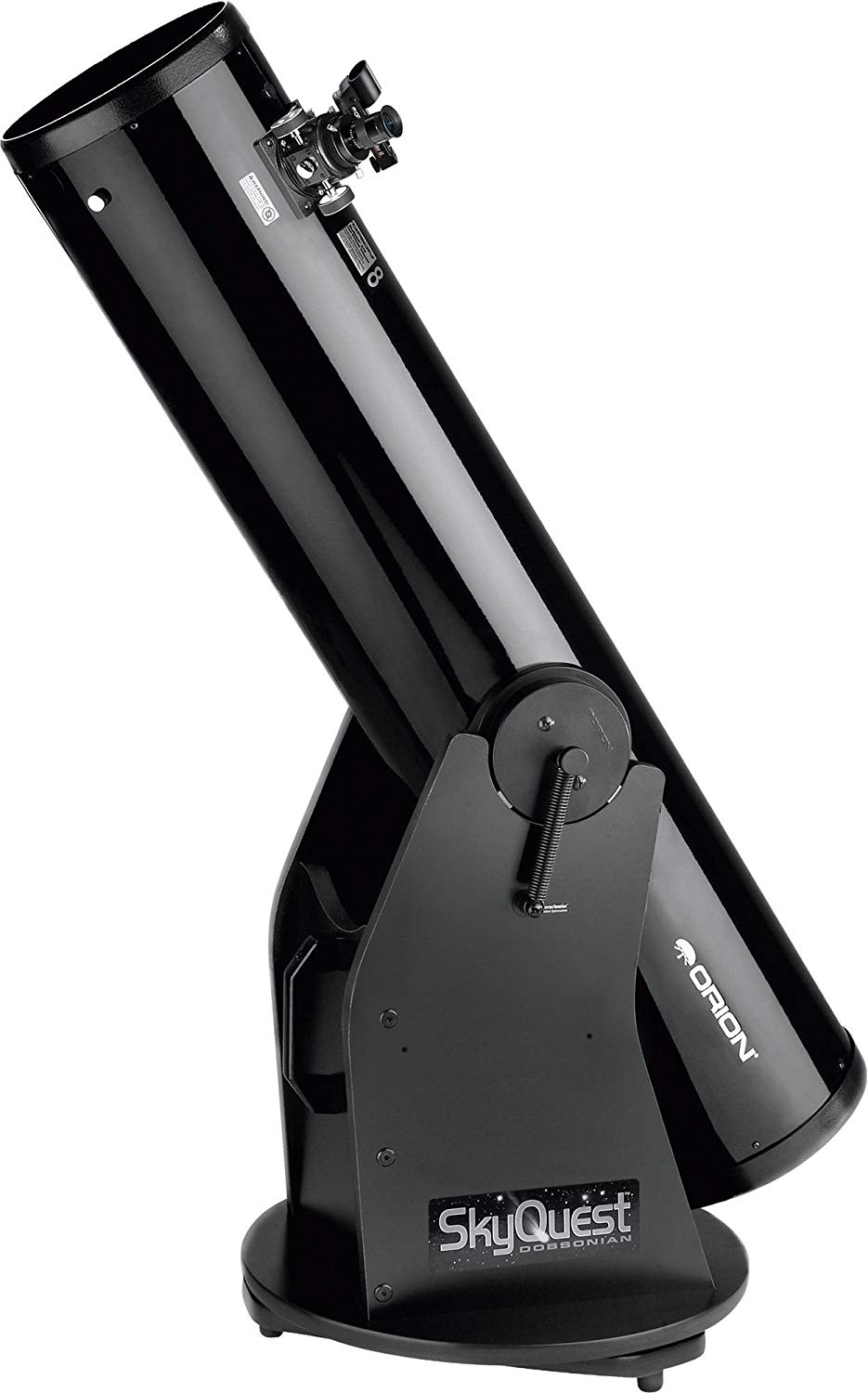
Suitable for clear images without distortion, this telescope mounts directly on tables and desks.
Editor’s Rating:
Design features
There are many unique elements about the telescope which make it desirable to many users. For example, it uses a parabolic mirror. This means it doesn’t suffer from chromatic aberration. Designed with a marked-center primary mirror, this telescope comes with easy collimation. For the best results, it does need collimation.
The 2 eyepieces are also designed to last. Furthermore, they can be based on the red to object finder which makes the entire experience simpler and recommends the telescope for beginners. The design of the telescope is also quite compact. It fits in cars and this means it can be taken to parks for the best views.
Convenient features
Being made with f5 aperture, the telescope is very bright. But this also means users should consider a filter when observing the Moon. With short length eyepieces, it offers clear and detailed results. A filter which reduced transition by up to 15% can be a good addition.
With a 13% filter, the telescope is best for photography. A good tip is to pair it with Orion’s own 13% Moon filter which is known to offer good results on large aperture telescopes. It keeps the color profile neutral, ensuring the telescope reaches its full potential.
Verdict
Suitable for learning purposes, this telescope is known for easy collimation and quick object localization.
- Suitable for detailed observation
- Reduced chromatic aberration
- Suitable for astrophotography
- Compact size fits car trunks
- No collimation instructions
5. Orion AstroView 90mm Equatorial Refractor Telescope
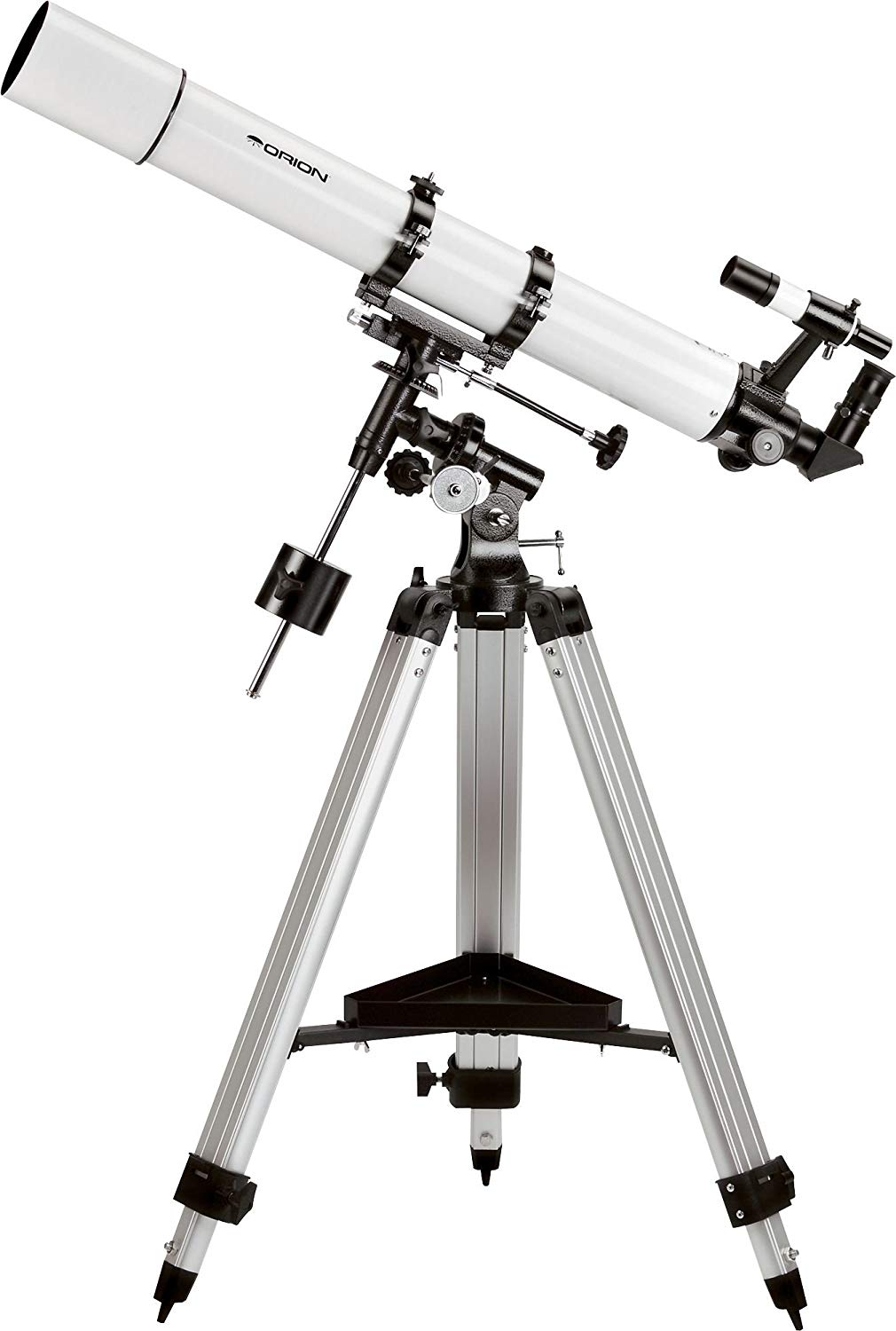
Based on an EQ mount, the telescope is made for slow-motion object tracking.
Editor’s Rating:
Design features
Using reliable materials, the qualitative telescope is made to improve object tracking, based on its EQ design. Unlike many others in its class, it allows slow-motion tracking. This design favors long exposure photography.
Its optics allow some of the sharpest images of the Moon and planets. Even going closer to details such as the Crater Ptolemaeus is possible. Those into photography can easily consider it as an upgrade from entry-level telescopes or binoculars.
Convenient features
With 2 eyepieces the telescope can be versatile. All collimation is done easily. With these eyepieces, users get one 25mm design for extra reach and a popular 10mm addition.
The most convenient feature of the telescope is the Equatorial mount itself. With manual object tracking, it allows users to get a better perspective on how planets and stars moving. However, some still prefer using binoculars first.
Verdict
The Equatorial mount tracking is what makes this far-reaching telescope a better option than many more expensive alternatives.
- Includes a 25mm and a 10mm eyepiece
- Based on an Equatorial mount
- Suitable for slow-motion tracking
- Great gift idea for astrophotography fans
- Some wobble on the EQ mount

